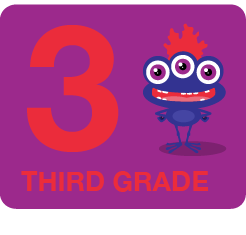This fun worksheet is here to help you master the skill of changing singular nouns into their plural forms! Rules are provided to assist you along the way. Your task is to transform a list of nouns into their plural versions. By the time you've transformed all 28 nouns on this list, you'll have leveled up your grammar skills and become a pro at plural nouns!
1. Understand the basic rule: The most common rule is to add an 's' at the end of the noun to make it plural. For example, if the singular noun is 'book,' the plural would be 'books.'
2. Learn irregular plural nouns: Some nouns don't follow the basic rule. For instance, the plural of 'man' is 'men,' not 'mans.' These are called irregular plural nouns. You'll need to memorize most of these.
3. Words ending in -ch, -x, -s, -sh, -z usually take 'es' to form plurals. For example, the plural of 'box' is 'boxes.'
4. For nouns ending in a consonant and 'y', change the 'y' to 'ies' to form the plural. For example, 'baby' becomes 'babies.'
5. Nouns ending in 'f' or 'fe' usually change to 'ves'. For example, 'life' becomes 'lives.' But there are exceptions.
6. Unchanging plurals: Some nouns are the same in both singular and plural forms. For example, 'sheep' is both the singular and plural form.
7. Irregular plurals: Some plurals are entirely different words. For example, 'child' becomes 'children'.
8. For nouns ending in a vowel and 'y', just add 's' for the plural. For example, 'boy' becomes 'boys.'
9. Always pay attention to the context of the sentence. Even if a noun follows a common pluralization rule, the context may indicate that the noun is irregular or unchanging.
10. Lastly, practice frequently to memorize the standard and irregular plural rules. Many resources, including grammar websites and online exercises, are available online to help with this. Remember, English language rules can have exceptions and irregularities.
Learning to Change Singular Nouns into Plural Forms
Additional Educational Resources:
Exploring Metaphors: A Playful Guide with Interactive Examples and Illustrations
Grammar Celebration: Present Participle Extravaganza
Hop into Poetry: Make Your Own Cinquain Poem
Creative Spelling - From Word Bank to Sentences: Spelling Practice with Silly Sentences
Learning to Change Singular Nouns into Plural Forms
GRADES:

Additional Educational Resources:
Exploring Metaphors: A Playful Guide with Interactive Examples and Illustrations
Grammar Celebration: Present Participle Extravaganza
Hop into Poetry: Make Your Own Cinquain Poem
Creative Spelling - From Word Bank to Sentences: Spelling Practice with Silly Sentences

